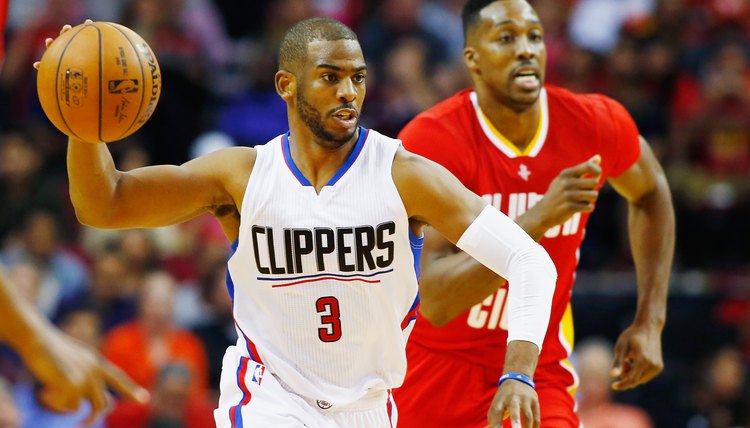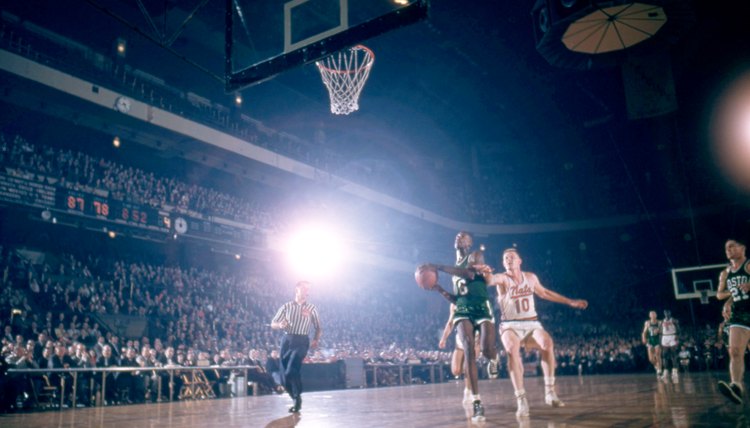Five Different Types of Basketball Passes

One of the most critical fundamentals in a basketball game is passing. Passing is used to create scoring opportunities for teammates, to beat pressure, and to keep the defense constantly moving.
The best offensive players in basketball are players that can perform various types of passes, such as chest passes, bounces passes, long passes, lob passes, and even no-look passes. In order to be an effective passer, basketball players must dedicate time to passing drills and overall ball handling skills so that they are comfortable using the different passing techniques and styles when they need to.
Chest Pass
The most basic pass in basketball is the chest pass, and it is most effectively used when a player has a clear passing lane to their open teammate.
- Hold the ball with both hands near your chest area
- Push hard outward with your thumbs, releasing the ball towards your teammate’s chest
If a player is dribbling and sees a split-second opportunity to hit a cutting teammate, they will often perform a one-handed pass that is very similar to a chest pass, except with one hand.
Bounce Pass
Another basketball passing fundamental is the bounce pass. Bounce passes are used to move the ball between teammates when there are defenders in or around the passing lane, such as when the guard is passing the ball to a pick-and-roll player or on out-of-bounds plays.
- Hold the ball with both hands at chest level
- Push hard outward with your thumbs, aiming for the halfway point between you and your teammate
NBA players like Chris Paul are sometimes seen putting backspin on bounce passes so that when they hit the ground, they can turn a different direction and wrap around a defender or two to reach the intended target; however, it is important for young players to learn a basic bounce pass before advancing to more difficult passes like those.
Baseball Pass
The baseball pass, or overhead skip pass, is a type to use when you have the ball in the back court -- often after a steal -- and your teammate is breaking to the basket.
- Take the ball and bring it overhead with both hands
- Throw a hard, direct pass to your teammate
The pass should lead your teammate and give him a chance to catch the ball at full speed and then accelerate toward the basket.
Outlet Pass
After grabbing a defensive rebound, it is common for post players to find a guard who can dribble up the court quickly. This pass to the guard is called an outlet pass.
- Secure the rebound
- Take one step away from the basket and look towards the right side and left side until you find a guard waiting for a pass by the sideline
This pass can be either a chest pass, bounce pass or overhead pass, Hall of Famers Bill Russell, Wilt Chamberlain and Wes Unseld excelled at making this pass.

No-Look Pass
The no-look pass is designed to confuse the defense, like when a point guard is leading a fast break and has two other offensive players with him. It has a high degree of difficulty because the passer looks in a different direction than the direction in which the ball will be going, making it an easy pass to throw away as a turnover.
When no-look passes work, they usually lead to an uncontested layup or a dunk. Magic Johnson made this pass one of his signature moves during his career, and point guards have been using this move since the 1980s.
Writer Bio
Steve Silverman is an award-winning writer, covering sports since 1980. Silverman authored The Minnesota Vikings: The Good, The Bad and The Ugly and Who's Better, Who's Best in Football -- The Top 60 Players of All-Time, among others, and placed in the Pro Football Writers of America awards three times. Silverman holds a Master of Science in journalism from the Medill School of Journalism.
